
Before World War II, Vienna had the third biggest Jewish community in Europe after Warsaw and Budapest. Most of these 200,000 people were assimilated Jews who contributed immensely to the country's economy, arts, and intellectual life (Sigmund Freud, Gustav Mahler, Arthur Schnitzler, Stefan Zweig, Ludwig Wittgenstein, Arnold Schoenberg, to name a few).
In March 1938, to the jubilation of most Austrians, Nazi Germany annexed the country (Anschluss) without a fight and started persecuting its Jewish community. While the majority of Austrian Jews managed to emigrate, 65,000 were killed in the death camps. By 1945, only a few hundred Jews remained in Vienna.
Today, Vienna has about 10,000 Jewish residents, consisting of descendents of Holocaust survivors, Bukharan Jews from the Soviet Union (Uzbekistan, Tajikistan, and Kyrgyzstan) who came in the 1970s and 1980s, and Hasidic Jews from the United States and Israel. The latter group forms a lively community with many kosher stores and restaurants in Leopoldstadt / District 2, also known as Matzo Island (Mazzesinsel).

1. Shoah Wall of Names (2021)
The most recent Holocaust memorial in Vienna is also its most ambitious. Located next to the National Bank, vertical granite slabs enclose a public garden and show the names and dates of birth of the 65,000 people who were murdered in 1938-45. “The victims included Jewish children, women and men, members of the Roma and Sinti communities, children and adults who were deemed to have mental or physical disabilities,” says the entrance plaque.
Despite its somber restraint, the memorial is very moving. Especially at night, when soft light is cast on the victims’ names. The project is the result of decades-long planning work by Kurt Yakov Tutter, an Austrian-Canadian born in Vienna and whose parents perished in Auschwitz. Location.
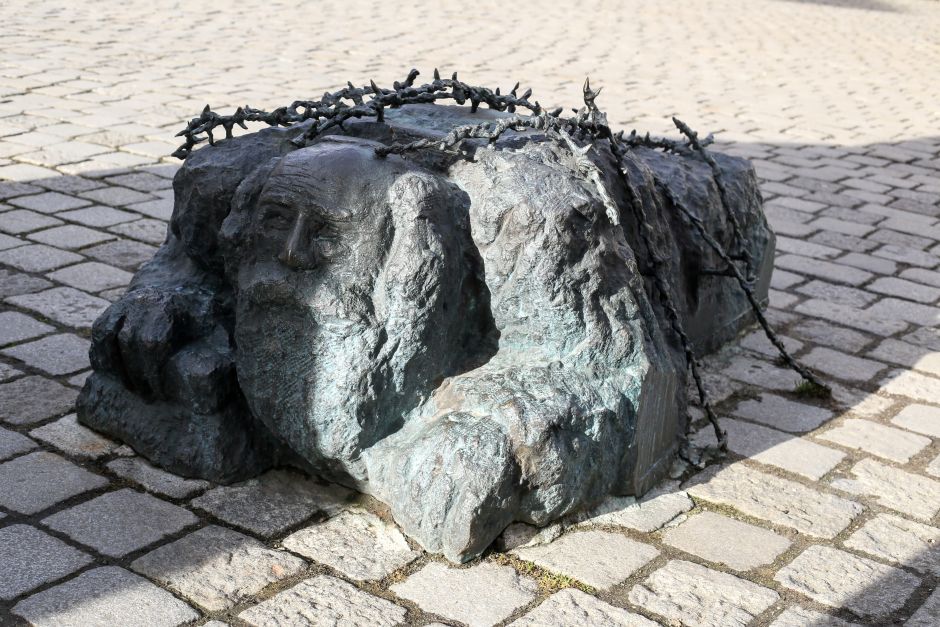
2. Monument Against War and Fascism (1988)
Designed by prominent Austrian sculptor, Alfred Hrdlicka, and located right behind the Opera House, this group of statues was the first major public memorial in Vienna for the victims of the Holocaust. The Gate of Violence depicts those who died in concentration camps (left side) and all other casualties of the war (right side). Behind it is the bronze figure of a kneeling Jewish man, wearing a kippah and cleaning the street with a brush, as a memory of the humiliation Jews suffered after 1938.
The two statues in the rear convey a sense of hope. First, Orpheus pulls itself free from the underworld, finally, the culmination of the monument: the granite monolith in the back inscribed with excerpts from the 1945 Austrian declaration of independence from Nazi rule. Location.
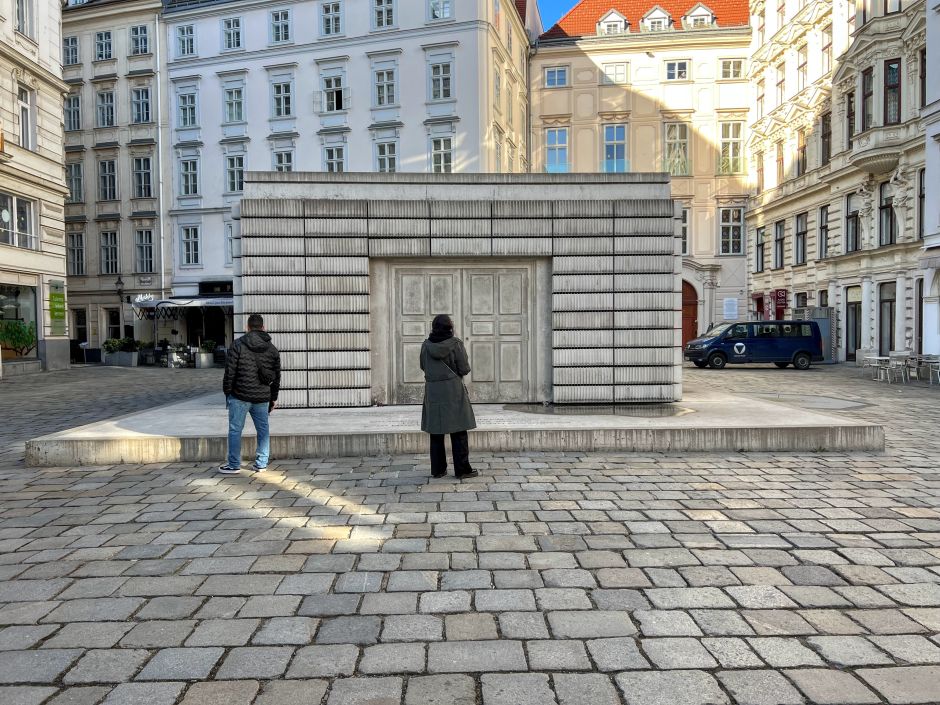
3. Judenplatz Holocaust Memorial (1998-2000)
Vienna’s best-known Holocaust memorial is located in the city center, where the medieval Jewish quarter once stood and near the remains of the main synagogue (which can be accessed via the Museum Judenplatz). English sculptor Rachel Whiteread designed a rectangular concrete block, resembling a permanently locked, inside-out library. The spines of the books face inward, hence unknown, symbolizing how the life stories of the 65,000 victims can’t be told and will forever remain inaccessible. Location.
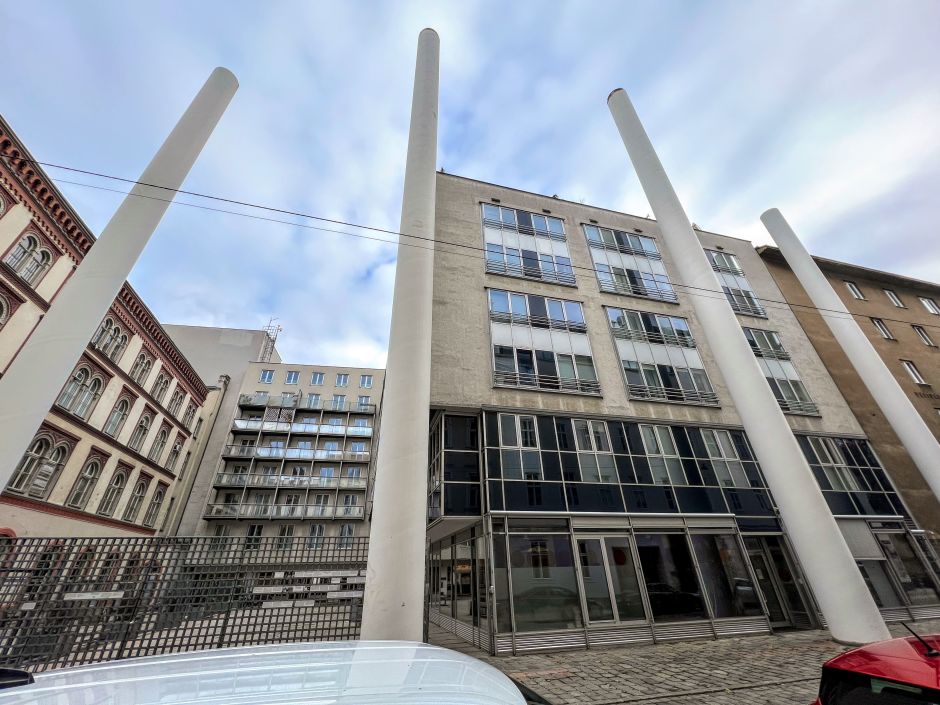
4. Memorial at the Leopoldstadt Temple (1998)
Leopoldstadt in District 2 was home to much of Vienna’s Jewish community before the Nazi takeover in 1938. Here stood the enormous Leopoldstadt Temple, designed in 1854-58 by Ludwig Förster, whose oriental architecture inspired many synagogues across the Austro Hungarian Empire (he did the famous one in Budapest's Dohány Street, too).
During Kristallnacht, the Night of Broken Glass, on November 10, 1938, the Nazis set the building on fire (together with 41 other synagogues and prayer rooms across Vienna). Only the small northern wing remained, which today houses a Jewish school and prayer room. In 1998, four white pillars were placed here, as a memory to the burned-down building. The size of the giant pillars conveys the original size of the synagogue. Location.
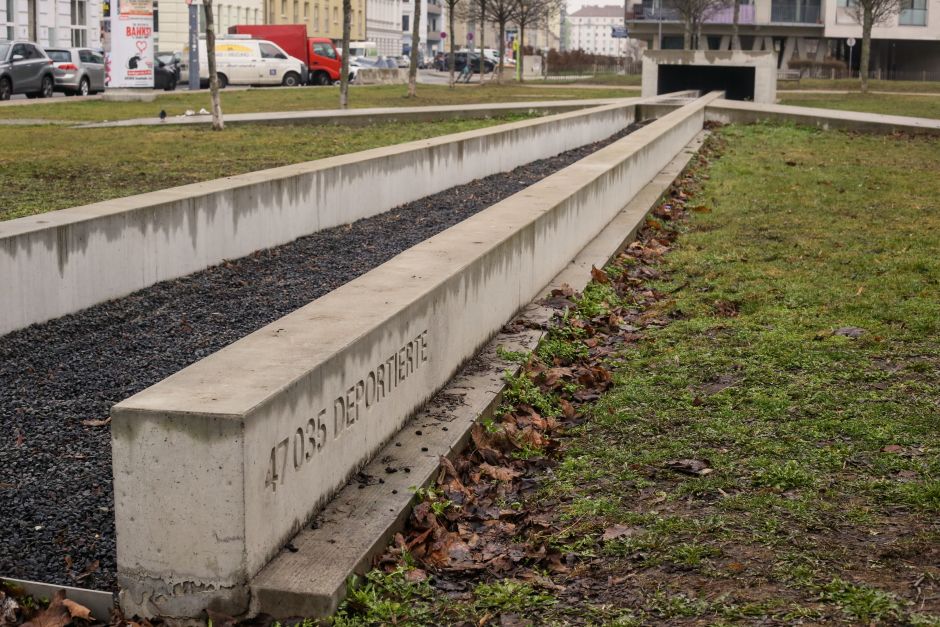
5. Aspang Train Station Memorial (2017)
Until the 1970s, the Aspang train station stood on Leon-Zelman-Park in Vienna’s District 3. It was from here that in 1941 and 1942 most Austrian Jews, 47,035 men, women, and children, were transported to death camps in places like Minsk and Auschwitz. “For most of the Austrian victims of the Shoah, the way to extermination began right here, in central Vienna,” reads the information plaque. The memorial's symbolism is painfully clear, consisting of two concrete rails that lead into a dark and hollow enclosure. Location.
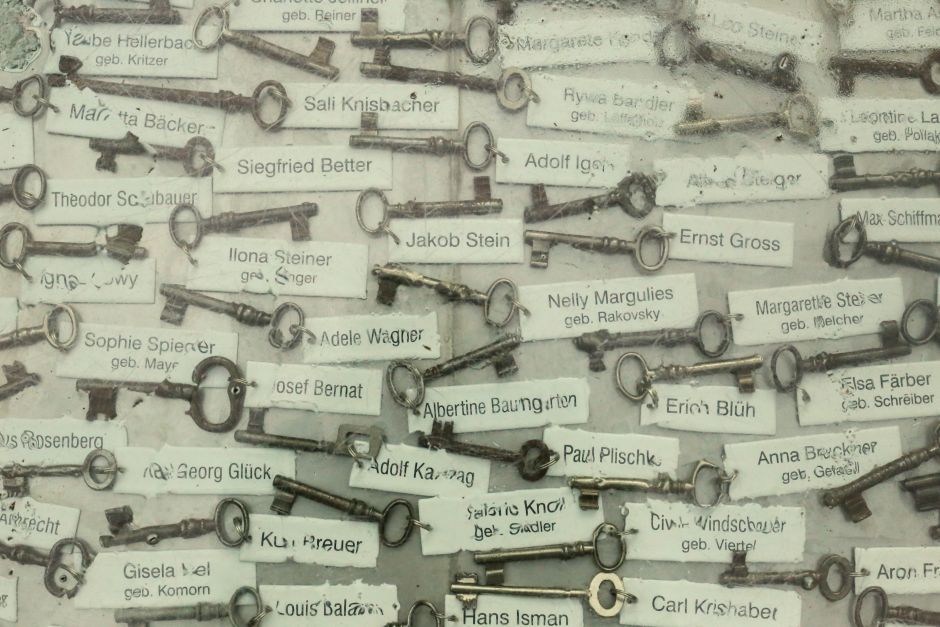
6. Keys of remembrance (2008)
While Leopoldstadt was Vienna's main Jewish quarter, (better-off) Jews also lived in the neighboring District 1 and District 9. Located in the latter, the elegant Servitengasse was majority Jewish before its residents and shop owners were brutally evicted in 1938, many of them later murdered. The small memorial, the result of local civil initiative, shows 462 keys with name tags behind a glass display lowered in the ground. It's a reminder of how many Jewish people once lived here. Location.